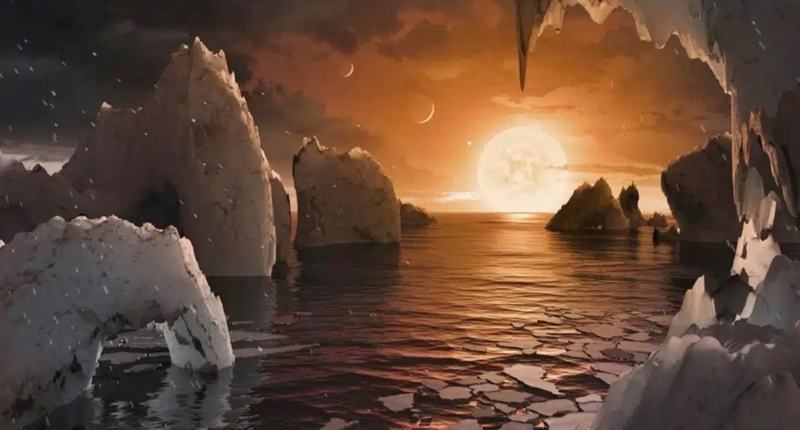TRAPPIST-1 b, the innermost planet in the Trappist-1 system, has been found by the James Webb Space Telescope to have no atmosphere and a temperature of about 500 kelvins or 232 degrees Celsius on its dayside. This discovery marks a milestone in determining whether planets orbiting small active stars like TRAPPIST-1 can sustain atmospheres needed to support life. The lack of an atmosphere would mean no water and no protection from cosmic rays. The Trappist solar system comprises seven planets about the size of our own, three of which are in their star’s habitable zone, making this star system even more alluring. Further observations are planned for this planet as well as the others in the Trappist system, as looking at this planet in another wavelength could uncover an atmosphere much thinner than our own. Keywords relevant to the article’s content that could assist in its SEO include TRAPPIST-1 b, James Webb Space Telescope, exoplanet, habitability, and mid-infrared light.
The James Webb Space Telescope has recently discovered that TRAPPIST-1 b, an Earth-like planet in the Trappist-1 system, is actually a burning furnace. Despite being part of the largest batch of Earth-like planets with a high chance of habitability, the planet has no atmosphere and has a temperature of about 500 kelvins or 232 degrees Celsius on its dayside. Using Webb’s Mid-Infrared Instrument (MIRI), astronomers discovered that the planet emits dim mid-infrared light, which is the first detection of any kind of light emitted by an exoplanet. This discovery marks a milestone in determining whether planets orbiting small active stars like TRAPPIST-1 can sustain atmospheres needed to support life. However, the lack of an atmosphere would mean no water and no protection from cosmic rays.
The Trappist solar system, which comprises seven planets about the size of our own, has enticed astronomers ever since they spotted it just 40 light-years away. Three of the seven planets are in their star’s habitable zone, making this star system even more alluring. Because the Trappist system’s innermost planet receives about four times the amount of energy that Earth gets from the Sun, it is possible that this extra energy is why there’s no atmosphere.
Using the largest and most powerful telescope ever sent into space, the James Webb Space Telescope, the US and French scientists were able to measure the change in brightness as the innermost planet moved behind its star and estimate how much-infrared light was emitted from the planet. However, the change in brightness was minuscule since the Trappist star is more than 1,000 times brighter than this planet.
Overall, the discovery of TRAPPIST-1 b’s true nature highlights the importance of the search for exoplanets that could sustain life, as well as the significant role that advanced technology such as the James Webb Space Telescope plays in uncovering the mysteries of the universe.
TRAPPIST-1 b, the innermost planet in the Trappist-1 system, has an orbital distance about one hundredth that of Earth’s and receives about four times the amount of energy that Earth gets from the Sun. It is twice as likely to have rocky planets as stars like the Sun. Further observations are planned not only for this planet but also for the others in the Trappist system, as looking at this planet in another wavelength could uncover an atmosphere much thinner than our own.
Don’t miss interesting posts on Famousbio
